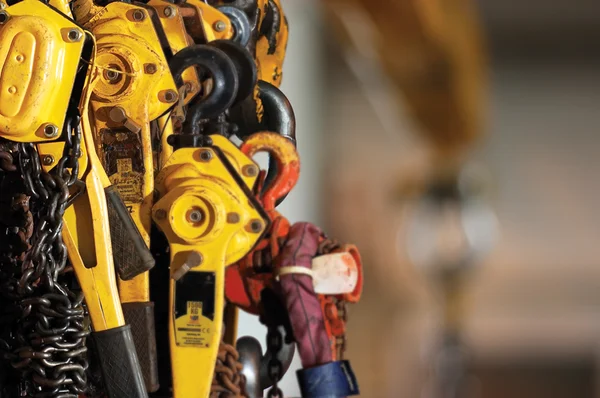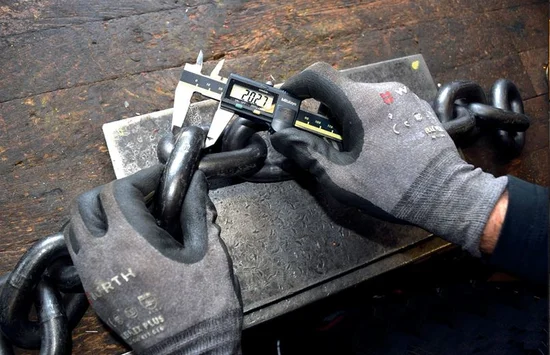When chains are used and stored correctly, they are a durable and cost-effective addition to your lifting and rigging arsenal. However, if stored incorrectly, the chain may be damaged and become hazardous. As deterioration of any chain link increases its risk of unreliability, this article will delve into our Lifting KnowHow to ensure your chain remains long-lasting and safe.
 Regular Inspection
Regular Inspection
Ensuring regular inspections are conducted is the first step in maintaining lifting chains. Be sure to keep an eye out for signs of damage, including:
-
Distorted links: This could be a sign of overloading or mishandling.
-
Surface damage: Look for gouges, cuts, or wear that could weaken the chain.
-
Corrosion: Rust or other forms of corrosion can significantly reduce the strength of the chain.
Environmental Factors
Environmental factors play a big part in the life span of your chains and can often lead to damage unseen by the naked eye. Practical knowledge and experience are required to understand thoroughly how your chains perform. Issues like hydrogen embrittlement (the deterioration of structural properties of solid metals due to the presence of hydrogen) lead to a severe risk of catastrophic chain failure but are very easy to overlook in an inspection if you are unaware of where your chains have been in use, how often they are in use, and unaware of small changes in the chains physical properties.

Proper Storage
When not in use, lifting chains should be stored in a dry, well-ventilated area away from direct sunlight and extreme temperatures on A-frames or wall racks. Lightly oil your chain before prolonged storage, and coil the chains loosely without kinks or twists to prevent unnecessary stress and deformation.
Proper Cleaning
It is essential to keep your lifting chain clean as dirt and grime can hide potential issues and accelerate wear. It is recommended to use a non-abrasive cleaner and a stiff brush to keep your chains clean. It is imperative to avoid corrosive substances as they can contribute to chain damage.
Lubrication
Lubrication reduces friction between the chain’s links, preventing wear and tear. Here at CERTEX Lifting, we offer lubrication services that increase the longevity of your chain’s life. Contact us for more information or to book your service.
 Professional Inspection
Professional Inspection
In addition to regular self-inspections, it’s important to have your lifting chains inspected by a qualified professional at least once a year. CERTEX Lifting service professionals can identify issues and concerns and determine if a chain is safe for use, or if it requires replacing. If you need to decide how frequently you should be conducting professional inspections or how to record your inspections, speak to one of our professionals who can give expert advice on your inspection regimes based on the use-cycle and working environments your equipment is subject to.
Remember, maintaining your lifting chains is not just about prolonging their life, but also about ensuring the safety of your operations. A well-maintained lifting chain is a safe lifting chain!
Contact us to book in your lifting chain inspection
Safe Usage of Lifting Chain
Guidelines and appropriate practices to ensure you continue safely and efficiently.
Understanding Chain Sling Configurations
What's the difference between a single and double leg sling? Why use a basket sling rather than a choker sling?




